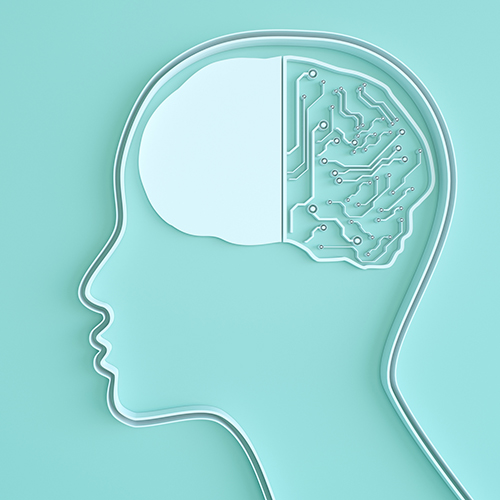 Treatment-resistant depression (TRD) poses a significant challenge for individuals battling persistent depressive symptoms.
Treatment-resistant depression (TRD) poses a significant challenge for individuals battling persistent depressive symptoms.
Despite multiple trials of traditional antidepressant medications, up to 40 percent of patients fail to achieve remission.
However, a ray of hope has emerged in the form of esketamine, a novel treatment that has garnered attention for its unique mechanism of action and promising results in cases of TRD.
Understanding Treatment-Resistant Depression
Treatment-resistant depression is diagnosed when individuals do not achieve remission after undergoing two complete trials of antidepressant medications.
A "good trial" involves dosing at therapeutic levels for 6-8 weeks. Unfortunately, a considerable portion of patients with depression find little relief even after the two delivered trials of antidepressant medications.
“Typically, widely-used antidepressants operate by targeting norepinephrine, serotonin, and dopamine receptors, either individually or in combination. What distinguishes esketamine is its unique mechanism of action as an antagonist of the NMDA glutamate receptor,” says Rachel Fargason, M.D., Patrick H. Linton professor and Senior Quality Officer in the Department of Psychiatry and Neurobiology.
“This distinctive approach has shown effectiveness in patients who have not responded to trials involving up to 15 different combinations of antidepressants and adjunct agents. Since the release of Prozac (fluoxetine) in January 1988, there has been no comparable breakthrough in the field of depression treatment.”
Esketamine is Transforming Depression Treatment
Matthew Macaluso D.O., Bee McWane Reid Professor and Vice Chair for Clinical Affairs, and Richard Shelton M.D., Charles Byron Ireland Professor, collaborated with industry and other research sites for more than 7 years on the development and study of ketamine and intranasal esketamine in patients with treatment-resistant major depression.
Approximately one in three patients who receive two or more traditional, oral antidepressants, do not respond and have TRD.
“Esketamine, branded in intranasal form as Spravato, is one of two components (chemically called enantiomers) of intravenous ketamine, which is a drug that has been approved in the United States as a dissociative anesthetic since the 1960s,” says Macaluso.
“Intranasal esketamine was FDA approved in 2019 for treatment-resistant major depression and in 2020 for suicidality associated with major depression. Intranasal esketamine was the first drug in the history of psychiatric drugs to receive a breakthrough designation from the FDA, which meant that it was novel mechanistically and treated an at-risk population. Patients who do not respond to traditional, oral antidepressants, may be a candidate for esketamine treatment for their depression.”
Navigating Esketamine Treatment
The first four weeks of treatment, or induction phase, consist of twice-weekly treatments. The induction phase is followed by weekly and biweekly dosing depending on the patient’s response. Many patients have experienced treatment effects that last for several months.
“On the day of treatment, patients are dosed in our intranasal esketamine treatment suite and are monitored for at least two hours after dosing,” says Leah Pickett, DNP, CRNP, Wellness Manager for Advanced Practice Providers and Esketamine Clinic Co-Director.
“While the nuisance effects of the drug typically don’t last longer than one hour, we monitor all patients for at least two hours after dosing to ensure any treatment emergent adverse effects are resolving/stable prior to discharge. Side effects may include, but are not limited to, dissociation, sedation, dizziness, nausea, anxiety, and elevated blood pressure. Treatment visits are staffed by both a registered nurse and a licensed physician or advanced practice provider. Patients must have transportation to and from visits, as they are not allowed to drive until the morning after dosing, following a good night’s sleep.”
The Potential Benefits of Esketamine
The potential benefits of esketamine for individuals with treatment-resistant depression are profound. Achieving remission through esketamine treatment brings back essential elements of life that depression often steals away. Patients who respond positively to esketamine experience a restoration of energy, vitality, motivation, concentration, and the ability to function in social and occupational roles.
UAB Esketamine Clinic
Following the research and industry collaborations of Drs. Macaluso and Shelton and the recruitment of Macaluso to UAB, the esketamine clinic at UAB was formed in 2020.
“UAB’s work in the development of intranasal esketamine as a clinical trials research site and the translation of this work into clinical practice represents an important role of an academic medical center in bringing new treatments from bench to bedside,” says Macaluso.
The clinic is now led by Rachel Fargason M.D., and Leah Pickett, DNP, CRNP overseeing the daily operations and direct care along with Loretta Hansen, RN. Their efforts have grown and expanded the clinic to be one of the largest of its kind in the region and one of only a few esketamine treatment centers in Alabama.
The clinic highlights UAB and the Department of Psychiatry and Behavioral Neurobiology’s commitment to advancing access to novel treatments, particularly for the most treatment-resistant patients.